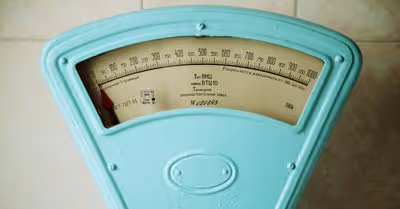Table of Contents
How Much Does an Arm Weigh?
Flabby upper arms is a problem that most women face. That's because women have up to 11% more body fat as compared to men. The main reason for this is nature's way of priming a woman's body for childbearing. This also means that if you are a woman, you will find it more difficult to get rid of excess arm flab; however, it's not impossible.
Testosterone is mostly associated with males, but even women have the hormone which helps support the body's ability to build muscle. Once the level of testosterone drops, the body tends to store fat - this excess fat is noticeable in areas around the hips and arms.
Males that weigh around 150 lbs. have an arm weight of around 8.5 lbs., which is around 5.9% of their total body weight. At the same time, the total weight of an arm is around 5% of the total body weight in women. Of course, this number may vary greatly depending on multiple other factors, such as age, height and weight. The average weight of an arm also varies depending on the region of the world one lives in.
For instance, the average adult weight in Africa is 133 lbs., while the average adult weight in Europe is 155 lbs. As a result, the average arm weight for an adult in Africa is going to be around 8.7lbs., and for adults living in Europe, it's going to be around 10lbs.
Average Bicep Size
A number of things impact the size of your biceps. BMI is at the top of the list. A person with a higher BMI is more likely to have larger arms.
Bigger arms as a result of a higher BMI aren't typically regarded as a sign of excellent health or strength in terms of health and muscle.
Body mass index (BMI) is a measurement of body fat that is determined based on weight and height. A person with a high BMI is typically termed obese. Even if your muscles are tiny, having extra fat around your arms will give you a greater circumference. It's a little more difficult to figure out the typical biceps size by height.
Although the mid-upper arm circumference has been researched as a technique for predicting someone's BMI when measuring their height isn't available, there doesn't appear to be any study on how biceps size is related to height.
With age, your arm circumference and biceps size vary. The average biceps size also differs between men and women.
To find out how big your biceps are while they're relaxed, do the following: Stand tall and comfortable with your arms at your sides. Someone else should hold a soft measuring tape around your biceps, which is halfway between your shoulder and elbow.
To determine the size of your flexed biceps, do the following: Place your arm on the surface and sit at a table. Make a fist with your hands. Bring your forearm toward your shoulder. Then, flex as hard as you physically can, as if you were executing a bicep curl. To get your measurement, place one end of the measuring tape around your biceps' highest point and wrap it around until the ends meet. This will give you the measurement of your bicep.
Decrease Arm Fat
Here are a few suggestions for reducing arm fat and promoting overall weight reduction. Spot reduction is a fat-burning treatment that targets a specific area of the body, such as the arms. Despite its popularity in the fitness sector, most studies have shown spot reduction to be ineffective.
Cardio is a form of exercise that involves raising your heart rate in order to burn calories. Cardio should be a part of your everyday activity if you want to decrease arm fat. It has been shown in studies to be an effective weight-loss and lean-body-mass-increasing technique.
One study of 141 persons found that combining 40 minutes of exercise three times per week with a weight-loss program resulted in a 9 percent reduction in body weight in only six months. At least 20–40 minutes of cardio per day, or 150–300 minutes per week, is generally suggested.
Activities such as swimming, dancing, biking and jogging all help you fulfil your daily cardio objectives and will help get rid of that upper arm flab.
Best Way to Tone the Arms
It's time to focus on the ideal weights for your toning arms now that you've got a range of routines to pick from. To begin, keep the weight of the dumbbells low and ensure that you do a lot of repetitions. The weight you work out with will be determined by your skill level, fitness level, and physical condition.
When it comes to muscle toning, you have a variety of options at your disposal. All of the following will work: barbells, resistance bands, kettlebells, and dumbbells. Dumbbells are often the greatest hand weights for toning. Dumbbells are a fantastic place to start because they're smaller and simpler to handle and work with.
Starting with 2- to 3-pound dumbbells and working your way up 5 or even 10-pound weights for ladies and 10- to 20-pound dumbbells for men should provide adequate resistance while still allowing you to maintain the reps high. It's time to up the weights after you can accomplish 12 to 15 reps with no difficulty.
Recent Articles
















